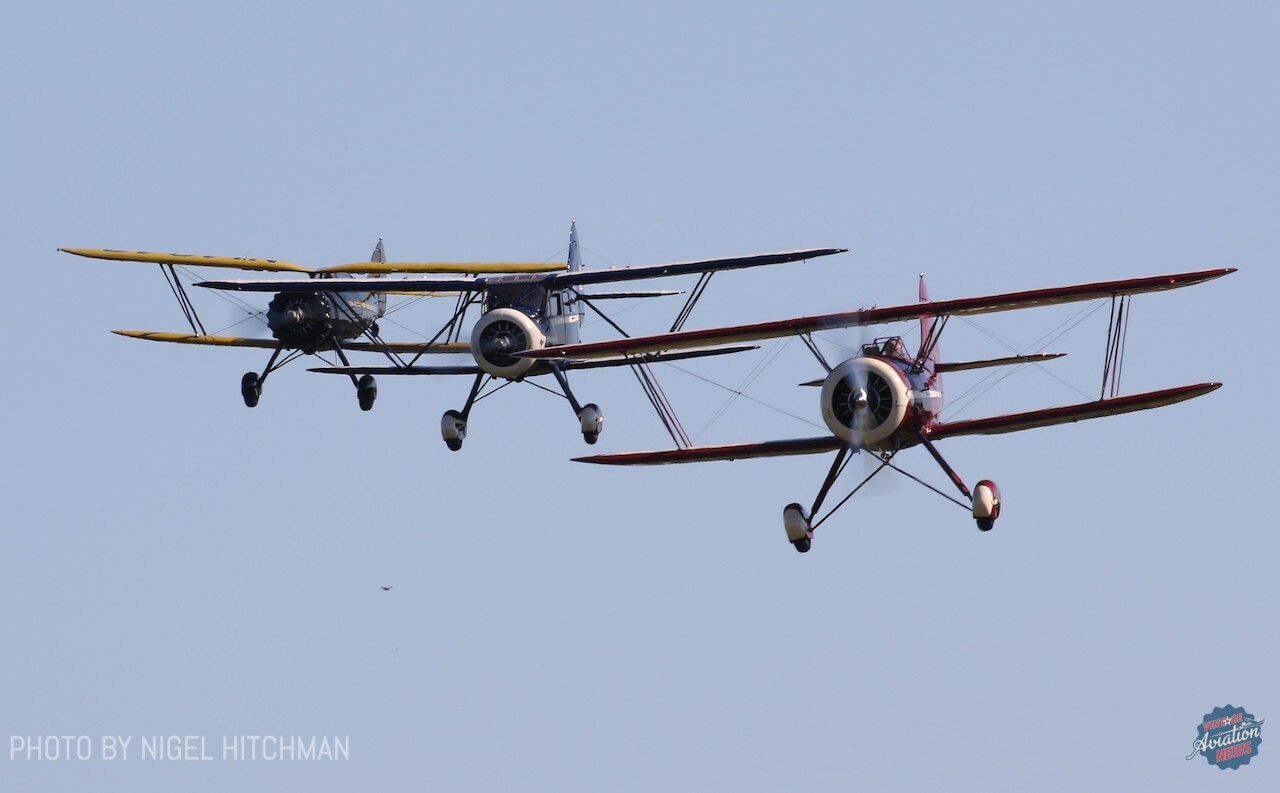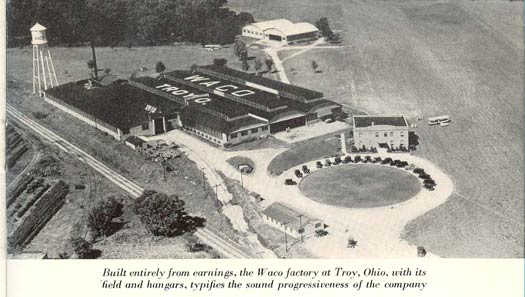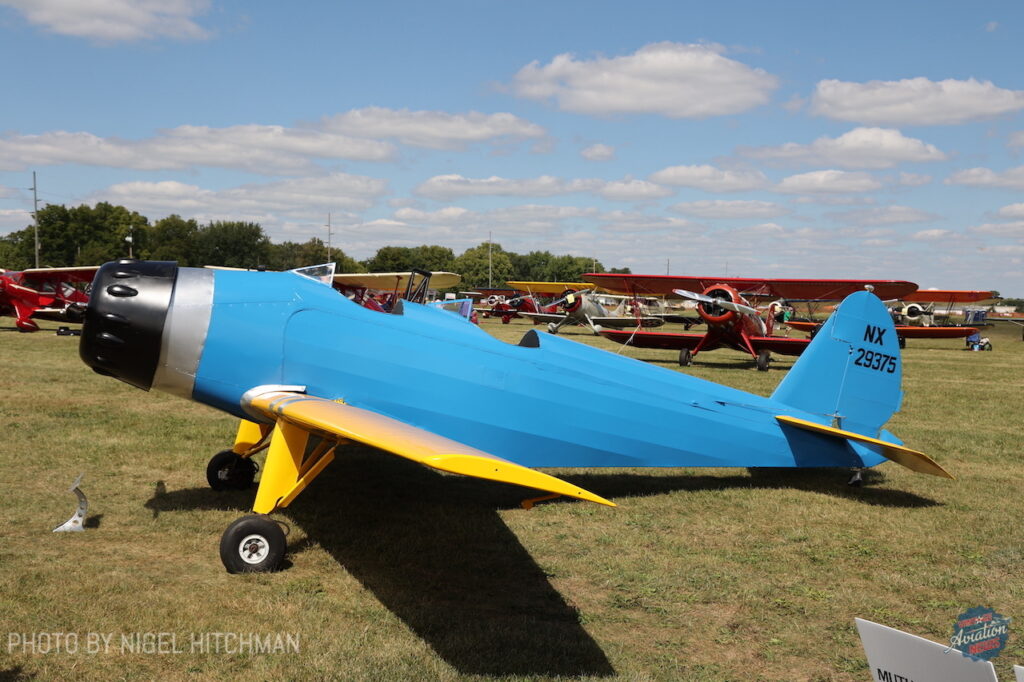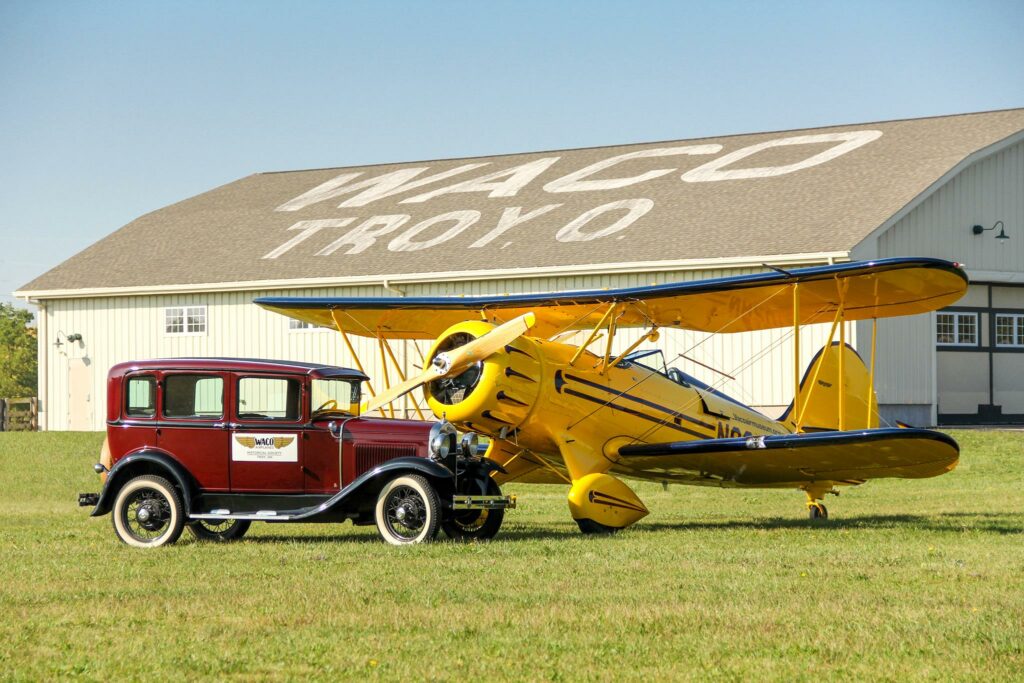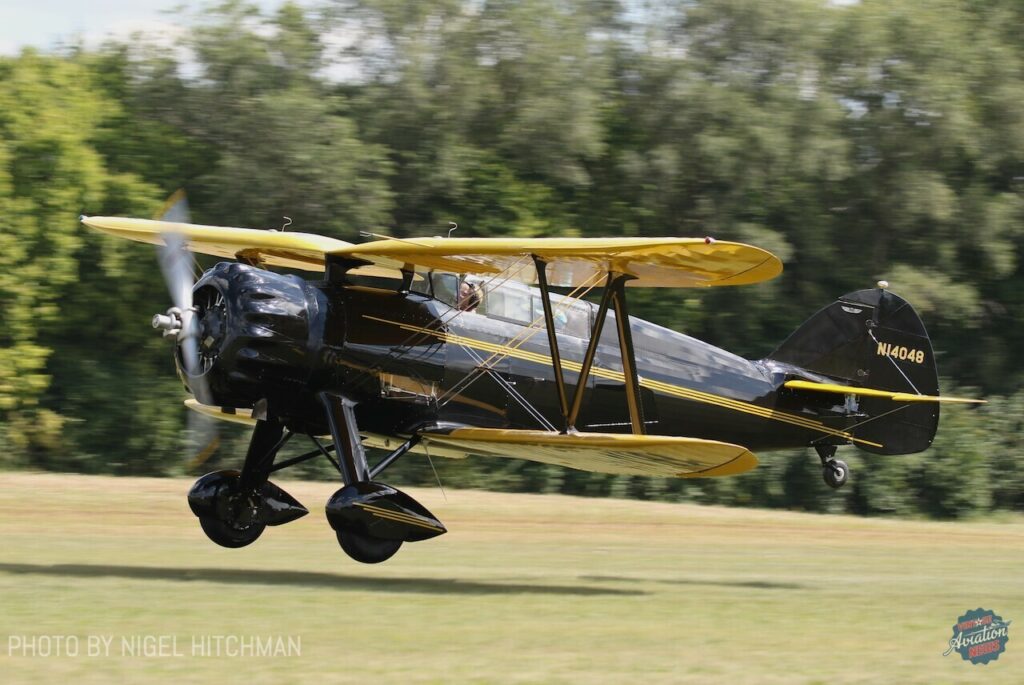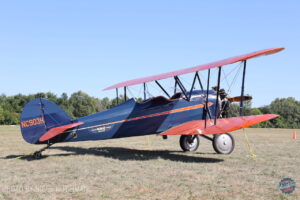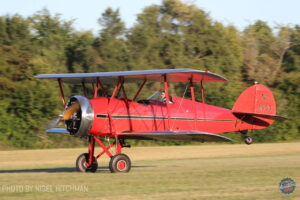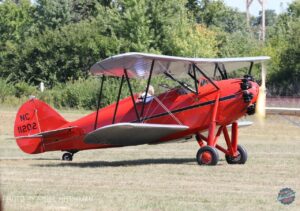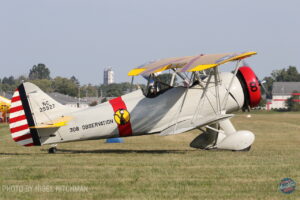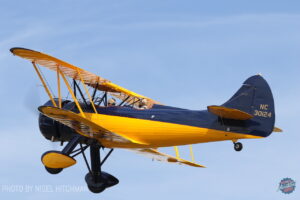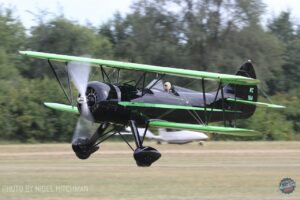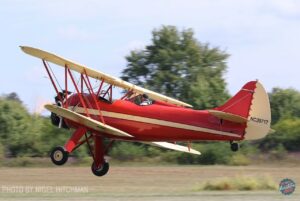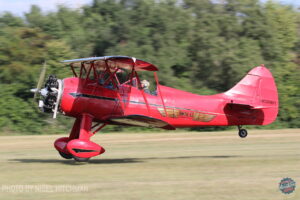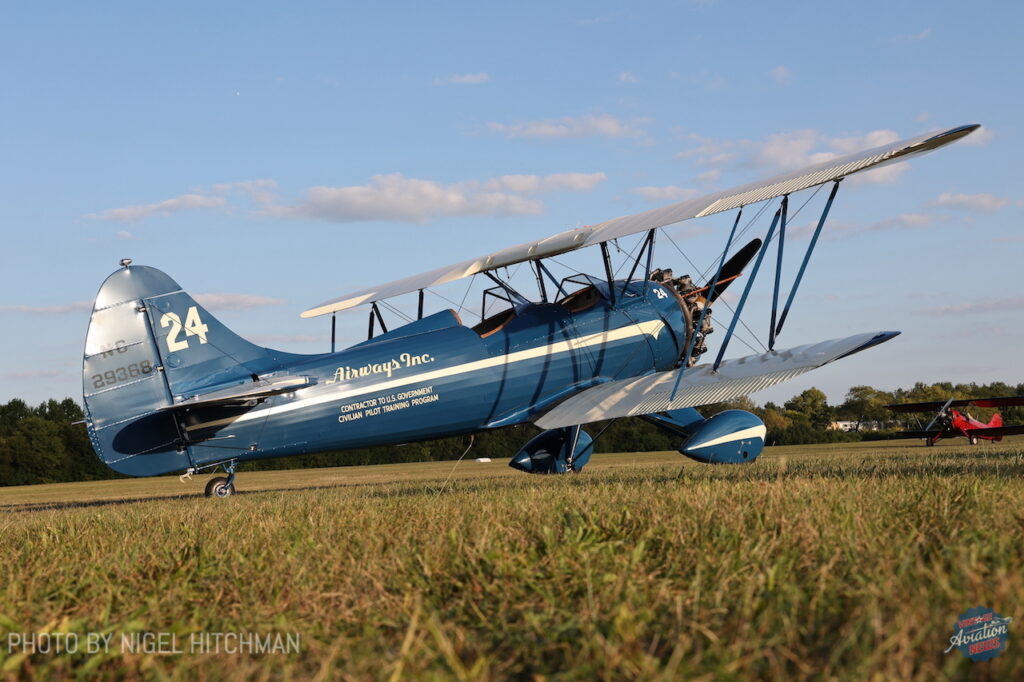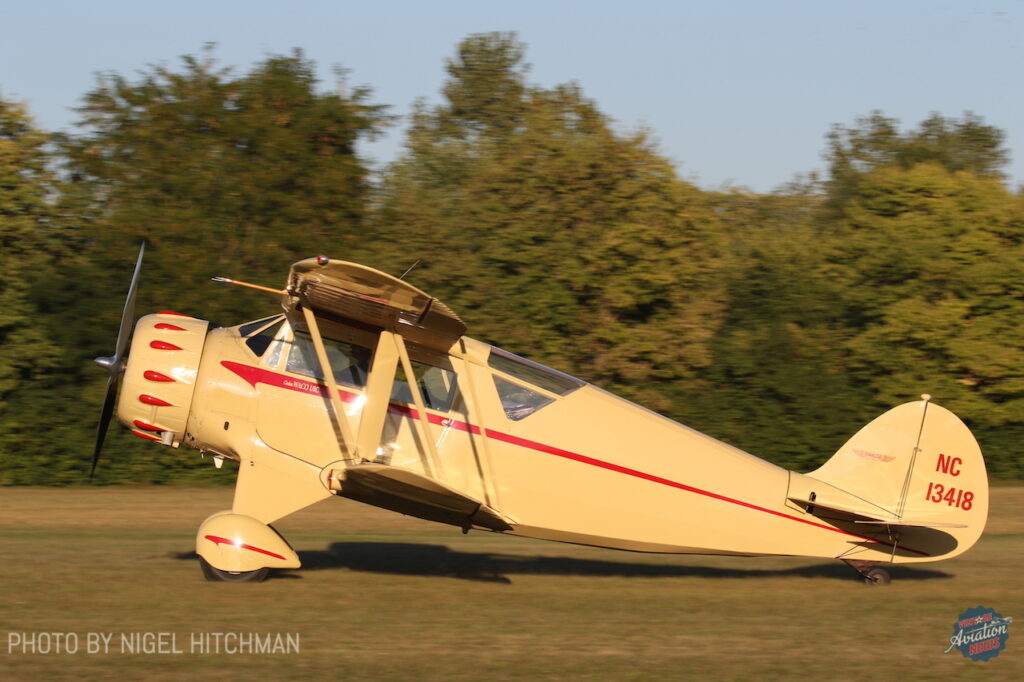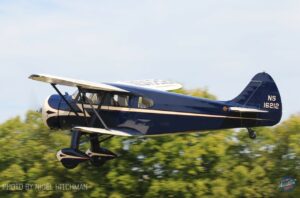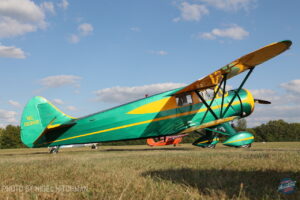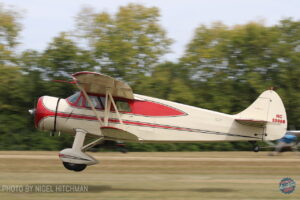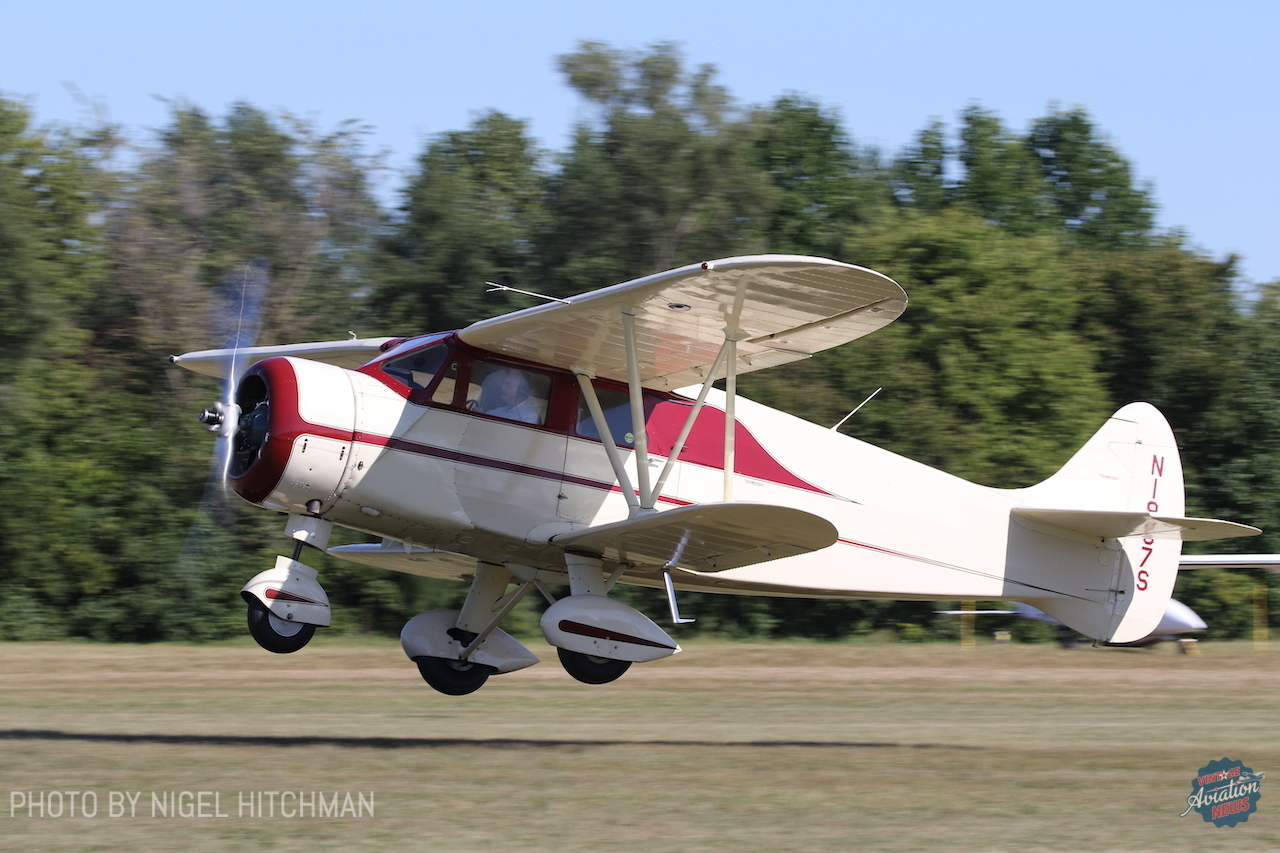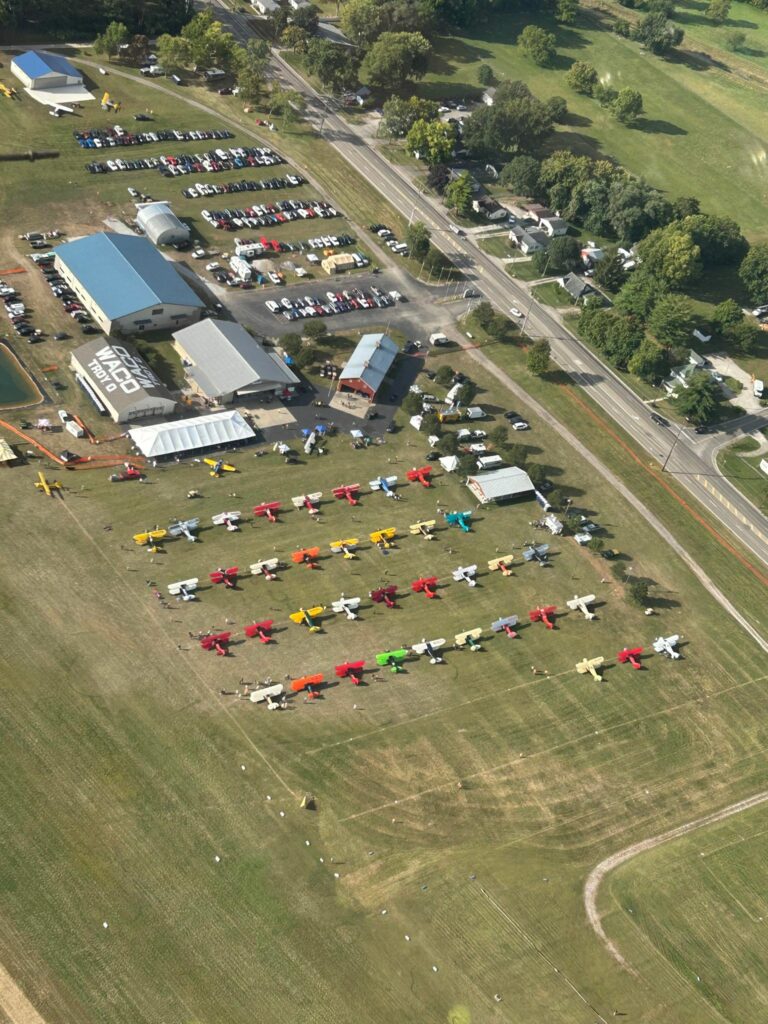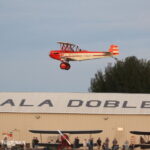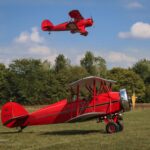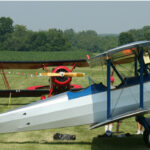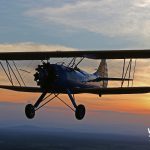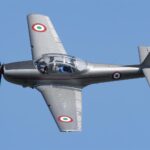by Nigel Hitchman
On September 15-17, 2023, the WACO Historical Society held a fly-in at Waco Field to commemorate the 100th anniversary of the famed aircraft manufacturer’s move to Troy, Ohio. The historic airfield is home to the WACO Air Museum, which itself is near the original Waco factory buildings. The event organizers had hoped to see 100 Waco biplanes in attendance, almost twice the number of these beautiful aircraft seen together since the original manufacturer ceased production. Even so, 45 Wacos did fly in for the event, joining the ten examples belonging to the museum, beating the previous record of 52 at the National WACO Club’s 50th-anniversary fly-in at Mount Vernon, Ohio in 2009 – although that event had seen the most flying in from out of town (50).
Waco was formed in 1920 as the Weaver Aircraft Company, following a meeting between businessmen Clayton Bruckner and Elwood Junkin and two pilots, George Weaver and Charlie Meyers, who were all working for Curtiss at the time. They named the company after Weaver since he had a well-known reputation as a flying instructor in the US Army Air Service and later as a barnstormer. They set up shop initially in Lorain, Ohio, but soon moved to Medina, where they designed and built the WACO Cootie, WACO 4, and WACO 5 (a modified Curtiss Jenny) – none of which proved successful. With no orders, they needed new investment. When this was achieved, the company moved to Troy, Ohio, changing its name to the Advanced Aircraft Company following the departure of Weaver (although they still named their products as Wacos). In 1925, Junkin designed their first successful aircraft, the Waco 9. The following year, he began work on the company’s most successful design, the Waco 10, which made its first flight in 1927. More than 1200 Waco 10s were sold, and the design spawned many developments – such as the famous Taperwing aerobatic aircraft.
In 1929, the company officially renamed itself as the Waco Aircraft Company, remaining in Troy. They proved a successful business, producing numerous sports aircraft and trainers (not to mention 4 and 5-seat cabin aircraft for use as luxury business aircraft or tourers). During WWII, they produced UPF-7 three-seaters for the civilian and military pilot training program. Perhaps their most famous WWII-era product was the CG-4A assault glider, which was a mainstay in a number of combat operations, such as the Normandy invasion. Waco struggled following WWII, with no pre-war models going back into production and just one prototype, the unsuccessful Aristocrat, being built in 1947. After producing non-aviation goods for several years and enduring a corporate takeover, the factory shut its doors for good in 1965, with all assets being sold off, although many of the company’s buildings remain standing. The company’s name lives on now with the Waco Aircraft Company of Battle Creek Michigan, which builds updated variants of the original 1935 Waco YMF-5.
As for the recent fly-in, it featured the debut of the museum’s most recent acquisition, a unique Waco RPT (NX29375). Waco built the RPT in 1940 to compete in a US Army Air Corps trainer competition, which it didn’t win. The airframe ended up in storage until 1962, when Waco finally sold it. The new owner refurbished it with a Kinner engine, also adding a canopy. The Waco Historical Society received the RPT as a donation a few years ago, although it had been in storage for many years. Museum volunteers spent considerable energy refurbishing the airframe in the days leading up to the fly-in, returning the RPT to its original configuration, which included removing the canopy and installing a Warner engine (albeit one without its internal parts). They also painted the RPT in its original colors, and it looks fabulous!
The WACO Air Museum has some ten aircraft in its collection, along with many photos and memorabilia. One of the aircraft on display is a replica of Waco’s first design, the ‘Cootie’. A replica of 1921 WACO 4, the company’s first multi-passenger design, is also featured in the museum. Ray Vaughan began that particular project in 1974, having also worked on the original back in the 1920s. The museum also has original examples of the Waco 9 and 10 on display.
Rarest of the visitors was John Riciotti’s unique 1934 Waco S3HD (N14048). This example was the only civilian version of the “D” series, the rest being armed, military variants exported to Nicaragua, Cuba, and Uruguay, but none of those has survived. Ernie Webb restored the S3HD during the early ’60s, selling it soon after to Dick Jackson who owned it for 47 years; Ricotti acquired it from him in 2013. That ’60s restoration has lasted well. Indeed, John has only had to replace the fuselage fabric and perform some other tidying up so far. That being said, the wings will receive some attention in a year or two, but they still look great on close inspection.
No Waco 10s flew in, but there were three examples of the ‘straightwing’ – these being the 1929 ASO (NC903H), 1930 ASO (NC119Y), and 1931 ASO (NC11253). The Museum’s ‘Taperwing’ – the 1929 ATO (NR13918) – was out on the flight line. A man named Joe Mackey was this aircraft’s original owner, buying it from the factory in 1934 for use in his barnstorming group, the Linco flying Aces. Mackey had the fuselage streamlined and covered with aluminum skin (instead of fabric), installing a larger engine and a bump cowl. Interestingly, this Waco was also one of two American aircraft invited to perform at the 1936 Paris Air Games, after which it returned to the air show scene back home. Restored in 1993, the aircraft flew for a number of years with BF Goodrich, attending air shows on occasion before retiring to the museum.
The 1930 Waco RNF NC11202 was the only early F series in attendance. This was a very recent restoration on its first flight away from its home base in Westerville, Ohio. There were at least 15 UPF-7s on hand, nowadays the most numerous Waco type. Several of them were of note. For instance, NC29927 is painted in the colors of a 308th Observation Squadron Boeing P-12 of the US Army Air Corps. NC30124 is a brand new restoration from Jerry Brown, making its first trip away from home in Indiana. Rare Aircraft restored NC164 a couple of years ago in the owner’s choice of livery – the green coming from the color of his Cirrus. NC39717 was mostly restored many years ago, following a 1984 accident, but the work was completed only recently; it arrived on just its second post-restoration flight, a short hop from nearby Troy Skypark. Whereas NC20971 flew all the way up from Florida to perform joy rides – it was very busy every day!
NC29368/24 has an interesting story. The Posey Brothers restored this aircraft for Tom Harden within their facility at Van Sant Airport in Pennsylvania. Harden’s grandfather had once owned this aircraft, operating it in the Civilian Pilot Training scheme during WWII. Tom Harden, searching for aircraft his grandfather had flown, found NC29368 at Raymond Cuypers’ workshops in Belgium and was able to purchase it from its owner, who himself had bought the project in the US some years earlier.
There were some fabulous examples of Waco Cabin aircraft on hand, including Roger James’ recently restored 1934 YKC (NC14139), which had just been crowned Grand Champion Antique at EAA AirVenture Oshkosh 2023. Almost as nice was Dave and Jeannie Allen’s YKC (NS14137), a previous Oshkosh award winner. Several other beautiful cabin-types included Doug Parsons’ YKC (NC14073) and brother David Parsons’ UKC (NC14010) as well as the “Pure Oil” UKC NC13897.
The oldest cabin-type present was the 1933 UIC NC13418, which looked fabulous in the evening sunshine when it arrived.
NS16212 is a 1936 YQC-6 originally delivered to the state of Nebraska – hence the ‘NS’ registration (also seen on YKC NS14137 which was the state of Ohio). It is a beautiful and recently restored example, winning an award at Oshkosh during 2022. Sleeker, more modern Waco Cabin aircraft included NC19360, a 1938 ZGC-8, and NC20908, a 1939 AGC-8.
Interestingly, Waco didn’t just produce these sleeker cabin-type aircraft in the 1930s, they also made the 1938 ZVN-8 (N1937S) with a nosewheel – apparently to make landing easier. The company produced around 20 of these unusual aircraft. Amazingly, Britain’s Royal Aircraft Establishment imported one of them in 1939 for use in evaluating nose-wheel designs at its Farnborough facility. It even received a Royal Air Force serial (P6330) but was written of in an accident during 1940. N1937S is presently the only airworthy ZVN, although there is another complete example (unflown for several years) plus a couple of projects.
Overall, the WACO 100th Anniversary Fly-In was a great event featuring a lot of magnificent examples from the legendary aircraft manufacturer. This included several new restorations and a good selection of other visiting aircraft too.
For more information about the Waco Museum and the Waco Historical Society please visit their website HERE. And for more information about Wacos in general, please check out the National Waco Club.







